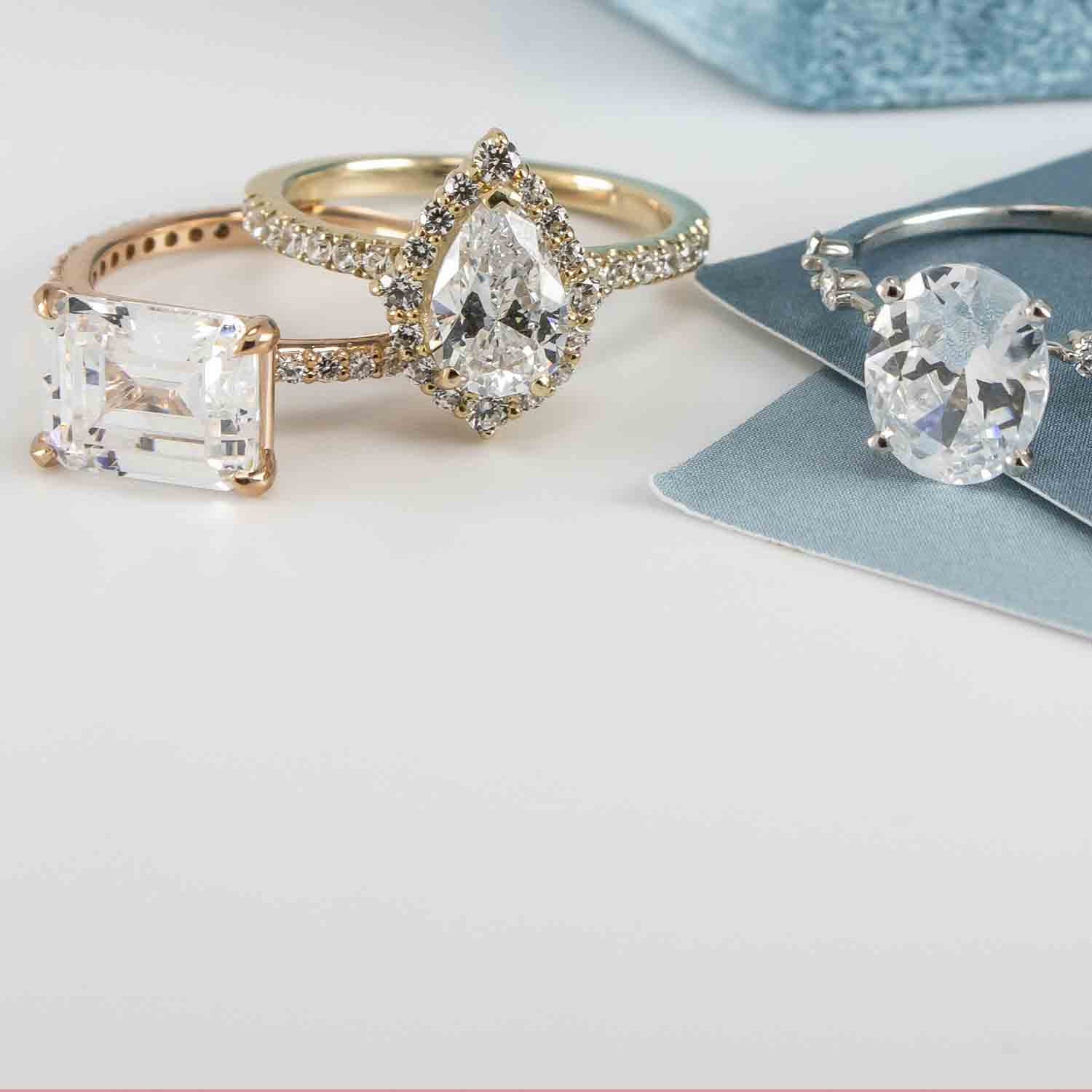Moissanite vs. Diamond vs. Lab-Made Diamonds: A Comprehensive Comparison
October 1, 2024When it comes to choosing gemstones for engagement rings, jewelry, and other accessories, the debate often centers around three main options: natural diamonds, moissanite vs diamond, and lab-made diamonds. Each of these stones has unique characteristics, benefits, and drawbacks. This article explores the differences between moissanite, diamonds, and lab-made diamonds to help you make an informed decision.
What is Moissanite?
Moissanite is a gemstone originally discovered in 1893 by French chemist Henri Moissan in a meteor crater. It is made of silicon carbide and has become a popular alternative to diamonds due to its brilliant sparkle and affordability. Moissanite exhibits exceptional brilliance and fire, reflecting light more vividly than diamonds. It ranks 9.25 on the Mohs hardness scale, making it extremely durable and suitable for everyday wear. While high-quality moissanite is nearly colorless, some stones can display a slight yellow or green hue. In terms of clarity, moissanite typically has very few inclusions.
The advantages of moissanite include being more affordable than natural diamonds, having ethical sourcing and eco-friendly production, and showcasing exceptional sparkle. However, some people perceive moissanite as less prestigious than diamonds, and its appearance can differ from that of a diamond in certain lighting conditions.
What is a Diamond?
Diamonds are natural gemstones formed under high-pressure and high-temperature conditions deep within the Earth’s mantle over millions of years. They are made of carbon and are highly valued for their rarity, beauty, and durability. Diamonds have a unique sparkle due to their cut and the way they refract light. The quality of the cut significantly influences a diamond’s overall appearance.
Diamonds are the hardest known natural material, scoring a perfect 10 on the Mohs hardness scale, making them extremely resistant to scratching. They come in various colors, with colorless or near-colorless stones being the most sought after. The clarity of a diamond is evaluated based on the presence of inclusions or blemishes.
The benefits of diamonds include their timeless and classic appeal, high resale value, and the variety of colors, cuts, and sizes available. However, diamonds are often expensive, especially for high-quality stones, and ethical concerns surrounding sourcing and mining practices can arise. Additionally, their limited supply contributes to high market prices.
What are Lab-Made Diamonds?
Lab-made diamonds, also known as synthetic or cultured diamonds, are created in controlled environments using advanced technology. These diamonds have the same chemical composition and physical properties as natural diamonds, making them indistinguishable from natural stones.
Lab-made diamonds exhibit the same brilliance and fire as natural diamonds, depending on their cut quality. Like natural diamonds, they score a 10 on the Mohs hardness scale, ensuring they are just as durable. Lab-made diamonds can be produced in a range of colors and clarities, often offering more options than natural diamonds.
The advantages of lab-made diamonds include their affordability, as they are often 20-40% less expensive than natural diamonds. They are also ethical and environmentally friendly, created without mining, and they often possess high quality, graded similarly to natural diamonds. On the downside, lab-made diamonds tend to have lower resale value compared to natural diamonds, and some consumers may perceive them as less prestigious. Additionally, some individuals may prefer the uniqueness of natural stones.
Conclusion
Choosing between moissanite, diamonds, and lab-made diamonds ultimately depends on individual preferences, values, and budget. Moissanite is a brilliant and affordable option that offers exceptional sparkle, making it attractive for those seeking an ethical and budget-friendly gemstone. Diamonds remain the traditional choice with timeless appeal and high status, though they come at a higher cost and may raise ethical concerns. lab made diamonds provide a middle ground, offering the same physical and chemical properties as natural diamonds but at a more accessible price point.















